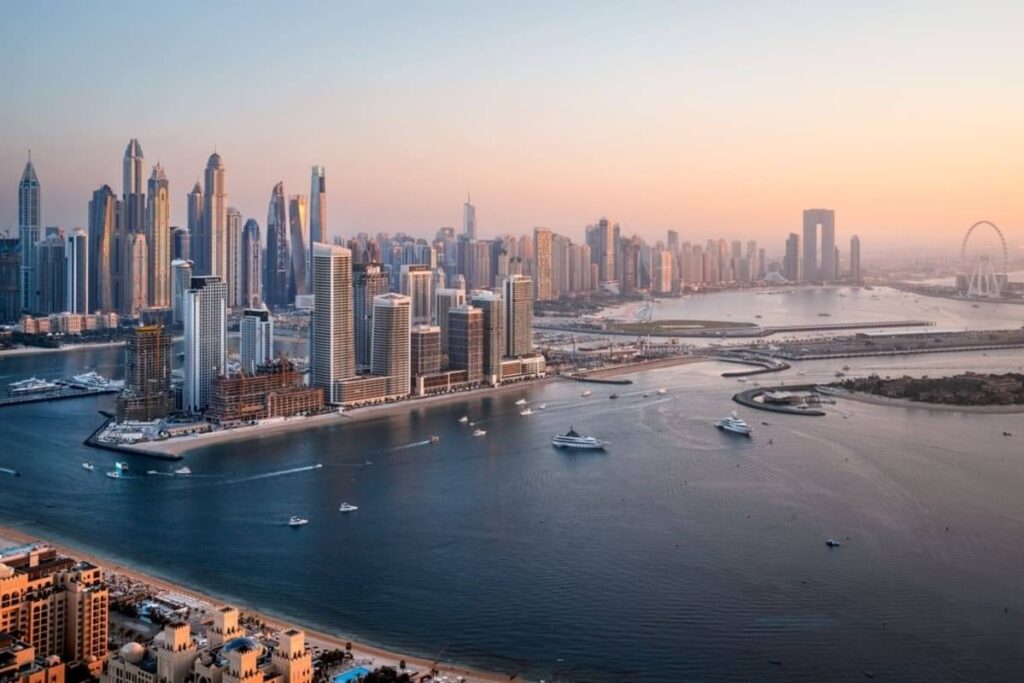In the first half of 2025, Dubai’s residential real estate market is still growing, and master-planned communities like Dubai Hills Estate and Emirates Living are essential for fostering long-term capital appreciation, investor confidence, and growth. These Emaar-developed neighborhoods offer a fusion of elegance, livability, and strategic investment attractiveness, making them not only architectural icons but also economic hubs.
Dubai Hills Estate: A Launchpad for Luxury and Livability
One of the most vibrant submarkets in the city is Dubai Hills Estate, which is situated between Downtown Dubai and Dubai Marina. The community gives easy access to important business centers with direct access to Umm Suqeim Street and Al Khail Road. King’s College Hospital, Dubai Hills Mall, an 18-hole championship golf course, and prestigious educational institutions like GEMS Wellington Academy are all located there.
“Dubai Hills Estate stands out as a meticulously planned ‘city within a city’ seamlessly blending expansive green spaces, world-class amenities like the Dubai Hills Mall and an award-winning golf course,” said Abdullah Alajaji, CEO of Driven Properties | Forbes.
This appeal is reflected in the figures. While ready transactions stayed consistent at about 1,400 each year, off-plan transactions increased from 1,149 in 2021 to 5,693 in 2024. This suggests low resale activity as a result of end-user retention and high investor trust in future-ready stock.
Additionally, sales prices have been rising gradually. Off-plan homes cost Dh2,479 per square foot by H1 2025, while ready-to-move-in residences cost Dh2,363 per square foot. A change from speculative purchasing to actual end-user demand is indicated by the closing gap between these categories. Emerald Hills plots cost Dh4,248 per square foot, while branded homes like Address Hillcrest fetch premiums of Dh5,148 per square foot.
The rental market in Dubai Hills is just as strong. In H1 2025, studio rents increased from Dh85.5K to Dh134.9K, while 1BR units almost doubled to Dh138.3K. The number of rental contracts rose from 3,686 in 2021 to 6,057 in 2024, and strong renewal rates suggest that tenants are satisfied and intend to stay.
The community’s performance is further supported by occupancy rates, which peaked in 2022 at 88.8% and stabilized at 86.5% in H1 2025. Dubai Hills has a balanced supply pipeline, guaranteeing controlled growth and sustainable demand, with 54% of its inventory still under development.
Emirates Living: Stability, Prestige, and Attractiveness for Families
Emirates Living is a monument to timeless worth, while Dubai Hills is a symbol of the future of opulence. This established villa development, which spans 52 million square feet, consists of Emirates Hills, The Meadows, The Springs, and The Lakes. With its rich vegetation, lakes, parks, and close proximity to prestigious schools and shopping centers, each submarket serves different lifestyle and budget sectors.
“Emirates Living is one of Dubai’s most prestigious villa communities, defined by its mature infrastructure, greenery, and family-centric lifestyle,” said Alajaji.
Over the previous four years, transaction volumes have stayed steady, averaging between 760 and 800 per year. 371 deals were registered in H1 2025, indicating that the market is still resilient in spite of price increases. Since 2021, the average price per square foot has more than doubled, and in H1 2025, it was Dh2,455.
Among its submarkets:
With the highest costs of Dh4,929 per square foot, Emirates Hills is the jewel in the crown. Its 5-bedroom villas cost Dh5,669 per square foot, which is indicative of its standing as a trophy asset market for extremely wealthy people. However, because of long-term ownership preferences and restricted supplies, liquidity is still low.
With 3-bedroom villas in high demand and 5-bedroom properties costing Dh4,831 per square foot, The Lakes offers a well-rounded investment profile. Stable liquidity and affluent community living are its main draws.
The Meadows’ pricing and demand are similar to that of The Lakes; since 2021, the value of villas with three or four bedrooms has more than doubled. Families looking for larger properties with potential for long-term value are catered to.
The Springs submarket, which makes up 55% of Emirates Living’s supply, is the most liquid. From Dh1,012 per square foot in 2021 to Dh2,044 per square foot in H1 2025, prices nearly doubled. First-time buyers and mid-market investors find it appealing because to its affordability and strong transaction volumes.
These dynamics are reinforced by rental tendencies. In 2024, The Springs had more than 1,700 rental contracts, making it the most active area. In contrast, Emirates Hills has a low rental turnover rate, which is indicative of its ownership-driven culture. Rental prices have been rising consistently across all submarkets, with Emirates Hills leading the pack in terms of price per square foot.
In conclusion
Two pillars of Dubai’s real estate strategy are represented by Dubai Hills Estate and Emirates Living; the former is centered on modern luxury and investment momentum, while the latter is more concerned with stability, prestige, and family living. Emirates Living provides long-term value due to its established infrastructure and limited supply, whereas Dubai Hills draws investors with its off-plan releases and branded homes.
Together, these communities are not only driving Dubai’s property market forward but also setting benchmarks for capital growth, rental yields, and lifestyle quality. As Alajaji summarised, “With powerful connectivity, world-class amenities, and enduring demand, these neighborhoods remain top destinations for family living, capital appreciation, and long-term investment.”
